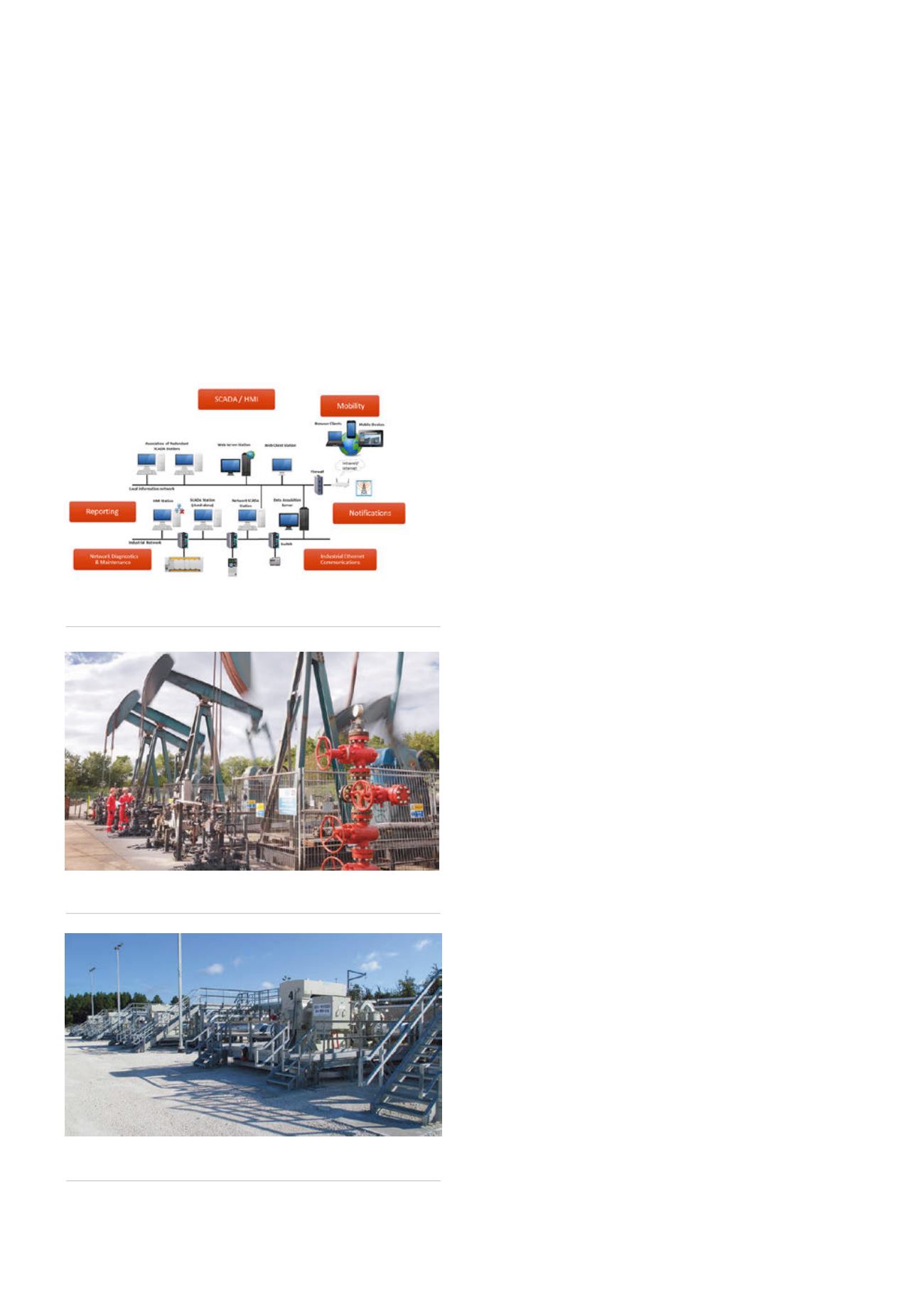
and offer more intuitive data acquisition, historians, displays,
controls and more open communications mechanisms such
as Microsoft’s dynamic data exchange (DDE). There was also
a movement toward commercial off-the-shelf operating
systems like Microsoft Windows and Linux using open
application programming interfaces (API). As the World Wide
Web became pervasive, the use of the internet, technologies
to enable applications to interact using XML, SOAP, Java
and other web specific technologies became the focus
of development. Industry associations formed to deliver
standards and migrate the industrial monitoring and control
industry of proprietary software and hardware to an open
client/server architecture. These architectures were designed
using standard protocols such as OPC creating the capability
to easily integrate equipment and systems provided by
different vendors.
Many SCADA vendors have come somewhat full circle in
which the majority have been acquired by equipment vendors
and have modified their software to give the advantage to
work better with the hardware of their parent company.
As a result, over time these captured SCADAs and HMIs on
the market have become more closed and proprietary. The
remaining independent SCADA vendors continue to be vendor
agnostic, bringing benefits such as rich features working an
independently and capable of an integrated approach within a
network of heterogeneous equipment such as programmable
logic controllers (PLGs). The global independent SCADA
vendors are leading the adoption of the new location based
technologies and are revolutionising the way SCADA is used.
Today, independent SCADA vendors provide a wide array
of nonproprietary modules including:
)
)
Human machine interface.
)
)
Communication protocols.
)
)
Real-time database structures.
)
)
Trending and alarm management.
)
)
Data analysis and reporting software.
)
)
Historian software.
)
)
Multi-station networking and redundancy.
)
)
Mobility.
SCADA mobility
Location based services (LBS) for mobility have been used in
the oil and gas industry for the past two decades. Since the
1990s, we have been using GPS (global positioning systems)
for outdoor navigation. These systems are found in real-
time navigation and mapping systems; now standard in many
vehicles. It basically comprises a general class of computer
programme-level services that use location data from GPS
satellites for navigation purposes. The adoption of LBS is
gaining traction as a valuable tool to determine location of a
person, vehicle or equipment asset. It is important for safety
in the case of an emergency when the immediate location of
personnel is critical. It facilitates ease and enhances safety
when trying to locate and conduct maintenance of a remote
pump or remote terminal unit (RTU) or any outside equipment.
It has helped in navigating personnel to a distant area of a
pipeline and/or informed them of the safest route to get
there in terms of weather, traffic, etc.
The adoption of outdoor technologies is helping
to further drive the interest in applications for indoor
technologies. Indoor location systems, based on proximity
based services (PBS), use indoor location systems when
satellites are unavailable. They offer more accurate location
services than GPS, often called micro-geolocation. Micro-
geolocation enables indoor positioning systems to specifically
Figure 3.
GPS is particularly helpful for tracking in remote
pump areas.
Figure 2.
Open SCADA architecture.
Figure 4.
Minute location detail can be made at oil and gas
pumping stations.
72
World Pipelines
/
JULY 2015


